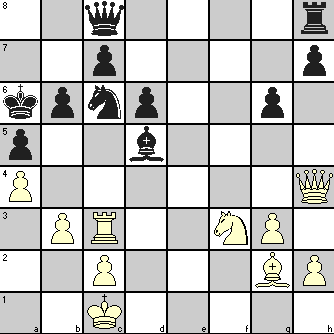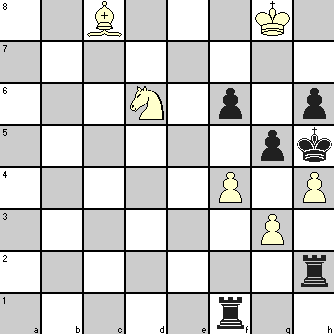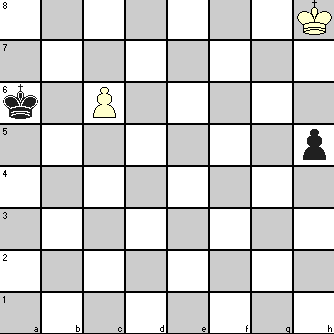We have shown you a few endgame compositions which brought out some specific ideas that could very well be used in some of your endgames. Endgame studies by Grandmasters like Lasker and Reti are rich in ideas as good as in many of the games they won in tournaments.
Genrikh Kasparyan (1910-1995) won Armenian championship several times but not much success in USSR championship and so had to remain satisfied with the title of an International Master. He later realized that his forte was in creating interesting endgame studies. He was so successful in this field that FIDE bestowed him with the title of International Grandmaster of Chess Compositions, the first player to be so honored. No collection of endgame studies will be complete without some of these compositions from Kasparyan!
But during his playing days, he did come up with some beautiful combinations which can be appreciated from his handling of the position reached in one of his games in a simultaneous display in 1936. No comments are necessary as after the first move, all subsequent moves by Black are forced.

| 1. | Rxc6 | Bxc6 | ||
| 2. | Qc4+ | Kb7 | ||
| 3. | Qxc6+ | Kxc6 | ||
| 4. | Ne5+ | Kc5 | ||
| 5. | Nd3+ | Kd4 | ||
| 6. | Kd2 | Qe6 | ||
| 7. | c3# |
The checkmate by a pawn move may have induced Kasparyan to create studies with similar finesse. We show below one of Kasparyan’s most famous endgame studies so that you will be able to appreciate his originality in this field. White has to play and win.

| 1. | Ne8 | Kg6 | White was planning 2. Ng7+ Kg6 3. Bf5# |
|
| 2. | h5+ | Rxh5 | 2. … Kxh5 enables White to implement his original plan | |
| 3. | f5+ | Rxf5 | ||
| 4. | g4 | Rf4 | To prevent 5. Bxf5# | |
| 5. | Bf5+ | Rxf5 | ||
| 6. | Ng7 | Wins as Black has to move one of the Rooks and White’s NP captures the other Rook with check and mate. |


